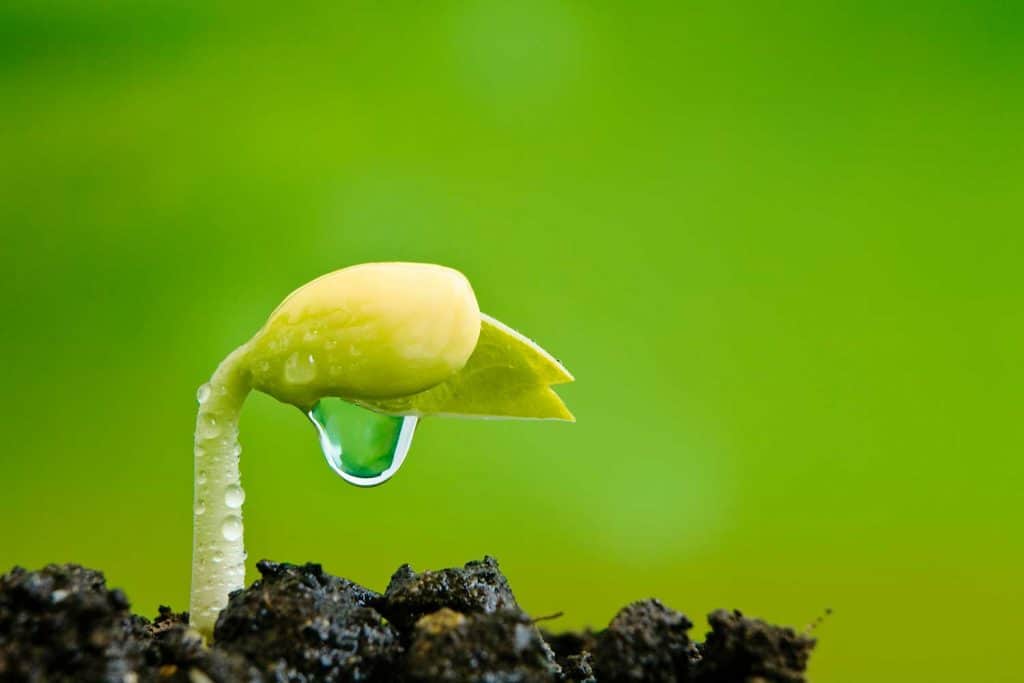If you plan to grow an areca palm tree, you may be wondering how to propagate the tree from scratch. Well, you'll be happy to know that there are a couple of ways that you can do this. We've researched the best methods to propagate these palms, and in this post, we will share them with you.
Here are two easy methods that you can use to propagate an areca palm tree:
- Cut an offshoot from the plant and re-plant it
- Germinate a seedling from the plant
The best method for propagating an areca palm tree will depend on your timetable and preference. The quicker way to grow the plant will be to use an offshoot, however. Continue reading to learn more about how to go about each method to propagate this palm.
![A bright living room with houseplant on the floor in a wicker basket, How To Propagate An Areca Palm [2 Viable Methods!]](https://gardentabs.com/wp-content/uploads/2021/05/How-To-Propagate-An-Areca-Palm-683x1024.png)
Methods To Propagate Areca Palm

The faster method to propagate your areca palm tree is simply cutting off and offshoot and starting a new tree. So, we'll first look at the offshoot method and then move on to the method from seed.
Method 1. Cut an offshoot from the plant and re-plant it
- Start by pulling the offshoot away from the trunk of the tree. Be sure to wear garden gloves when doing this to avoid getting cuts on your hands. It's also helpful to dig around the soil beneath the offshoot to help loosen it up. Once you have a firm grip on the offshoot, take a utility knife or saw and cut it away from the branch. Wipe away any loose dirt from around the bottom of the offshoot
- Next, grab a bowl that's large enough for the offshoot and fill it halfway with lukewarm or cool water. You can use tap water. However, it's better to use distilled or spring water. Make sure that the root of the offshoot is completely submerged in the water. Let the offshoot soak anywhere from 45 minutes to an hour, as this will help the roots prepare to be re-planted.
- After the offshoot has soaked, transfer it to a planter's pot. Fill the pot with soil mix, and it's best to add a mixture of peat moss, perlite, and or sand using a 3:1 ratio to help make the soil a bit heavier. Add water to the pot so that the roots can attach to the new soil. Then, cover the base of the offshoot with the soil.
- Next, place the bowl in a well-lit area so the offshoot can receive daily sunlight. Also, be sure that the temperature in the environment remains warm and humid--ideally, above 75 degrees Fahrenheit and with an average humidity of 50% or more. A hygrometer can help you monitor this.
Learn more about this hygrometer on Amazon.
Method 2. Germinate a seedling from the plant
- Start by purchasing healthy seeds from a local nursery or getting them from a current areca palm you already have.
- Next, wash the seeds by rinsing them under a mesh screen in the sink. This will help to remove the thin outer skin and make them ready for planting. You can also take a thin, soft cloth and run the seeds between your hand to remove the skin as well. Be careful when doing this, as you don't want to crush the seeds accidentally.
- Once you have cleaned the palm seeds, place them in a bowl of cool or lukewarm water for five to seven days. Be sure to change the water every day so that the shell on the seeds can soften.
- Once the seeds start to sprout, remove them from the bowl place them in a small pot. Fill the pot with soil mixture in addition to peat moss and sand in a 3:1 ratio. Place the seeds at least six to eight inches inside the pot and then add water to it. When planting the seeds, be sure to place them a few inches apart so don't crowd each other.
- Next, place the pot in a well-lit area of your home and ensure that the environment stays warm and humid, with temperatures above 75 degrees Fahrenheit and a humidity of at least 50%. Be sure to check the soil daily and water it as needed so it stays moist and damp to the touch.
Check out this gardening shovel on Amazon.
Propagation Tips
Once the seeds have sprouted, be sure that their environment stays warm and with relatively high humidity. If not, you will find that the sprouts will not grow and may begin to show signs of stress, such as turning yellow or leaning to the side. Also, be sure to keep the seedlings near an abundant light source so that they have access to full sun and absorb its energy.
Keep in mind that areca palm trees can be susceptible to root shock after transplanting them, so it's best to wait until the seedlings have anywhere from three to four sets of leaves before you move them.
The areca palm seedlings won't require fertilizer initially, but once they begin to grow actively, it may be a good idea to apply a small amount of liquid fertilizer weekly. It's best to use a fertilizer that is specifically made for palm trees.
Can you grow areca palm from cuttings?
Yes, you can grow areca palm trees from cuttings. To do so, you'll need to remove the cuttings and re-plant them.
How do you take cuttings from areca palms?
It's best to divide the areca palm during the summer or spring seasons. To take cuttings from the tree, you'll first need to divide the plant into two or more pots. It's best to select a plant that is fairly mature and has well-established strong branches.
Start by finding offshoots that already have established roots and separate them from the rest of the tree. Next, use a utility knife to cut the offshoots away from the tree. Then, rinse the roots of the offshoots and then place them in separate containers.
These containers should be half full with a mixture of potting soil, peat moss, and perlite. You can also soak the offshoots for a few days to help open up the roots--and be sure to use a pot that has at least one drainage hole to prevent the plant from becoming waterlogged. Next, be sure to place the cuttings in an area where they can receive full sunlight daily.
Check out this plant pot on Amazon.
Can you grow areca palm in water?
No. While you can initially propagate an areca palm tree and water, you will need to move the offshoot to a planter's pot eventually. Areca palms are too big and heavy to be sustained using a hydroponic growing system. These systems are better equipped for smaller, lighter plants.
How do you germinate areca palm seeds?

Germinating areca palm seeds is fairly easy. To summarize our previous steps: You'll first need to rinse the seeds in water using a mesh film. You can also use a soft cloth and rub the seeds between your hands to remove the outer shell. Next, you'll need to soak the seeds in water for about four to seven days so that they can sprout.
Once the seeds have sprouted, you can plant them in a planter's pot or the ground so that they can grow and mature. It's important to monitor the soil to ensure that it stays hydrated while the plant is in its early growth stages.
Check out this mesh film on Amazon.
What do areca palm seeds look like?
Areca Palm seeds are about the size of a small grade. They are orange, oval-shaped, and have a thin outer shell.
How do you grow areca palms?
You can grow areca palm trees by cutting off offshoots from an existing tree or taking the seeds from an existing tree and germinating them. If you choose to use the offshoot method, you'll need to be sure that the offshoots are healthy and have healthy roots.
If you try to grow an areca palm from an unhealthy tree, the chances are that the offshoots will not survive. Also, if you plan to use seedlings to grow your areca palm tree, it's important to make sure that the seedlings are sprouted before placing them in the soil.
After the seeds have sprouted, you'll need to place them in a location where they can receive daily sunlight and where the temperature remains warm and humid. You'll also want to ensure that the soil remains moist so that the seedlings' young roots do not dry out.
Wrapping Things Up
We hope that this post has been helpful and illustrating how to space areca palms when planting them. Remember, areca palm trees will spread anywhere from six to eight feet, so it's best to space them out during planting so that they have ample room to breathe and grow.
Before you go, be sure to check out our other posts:




